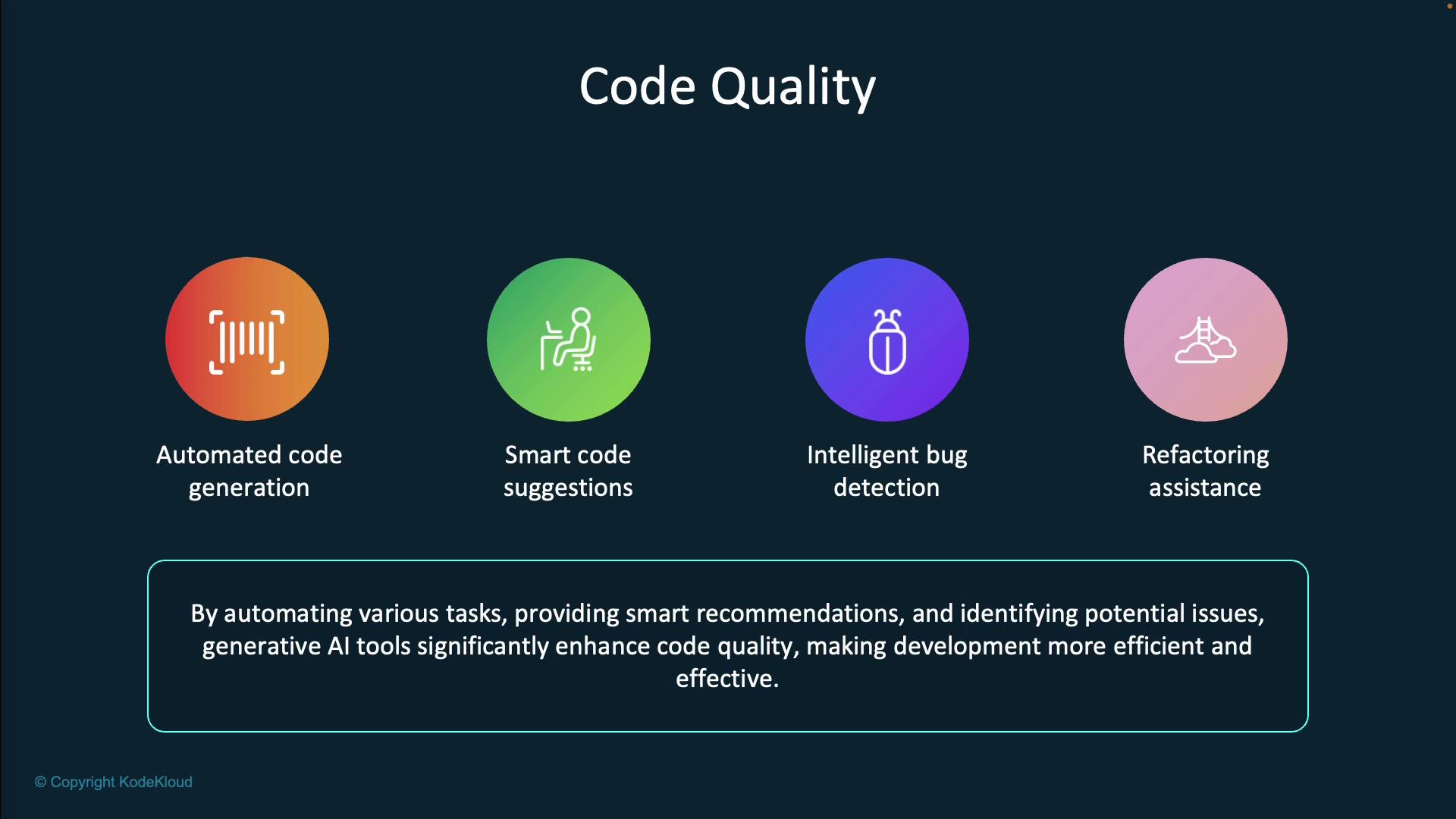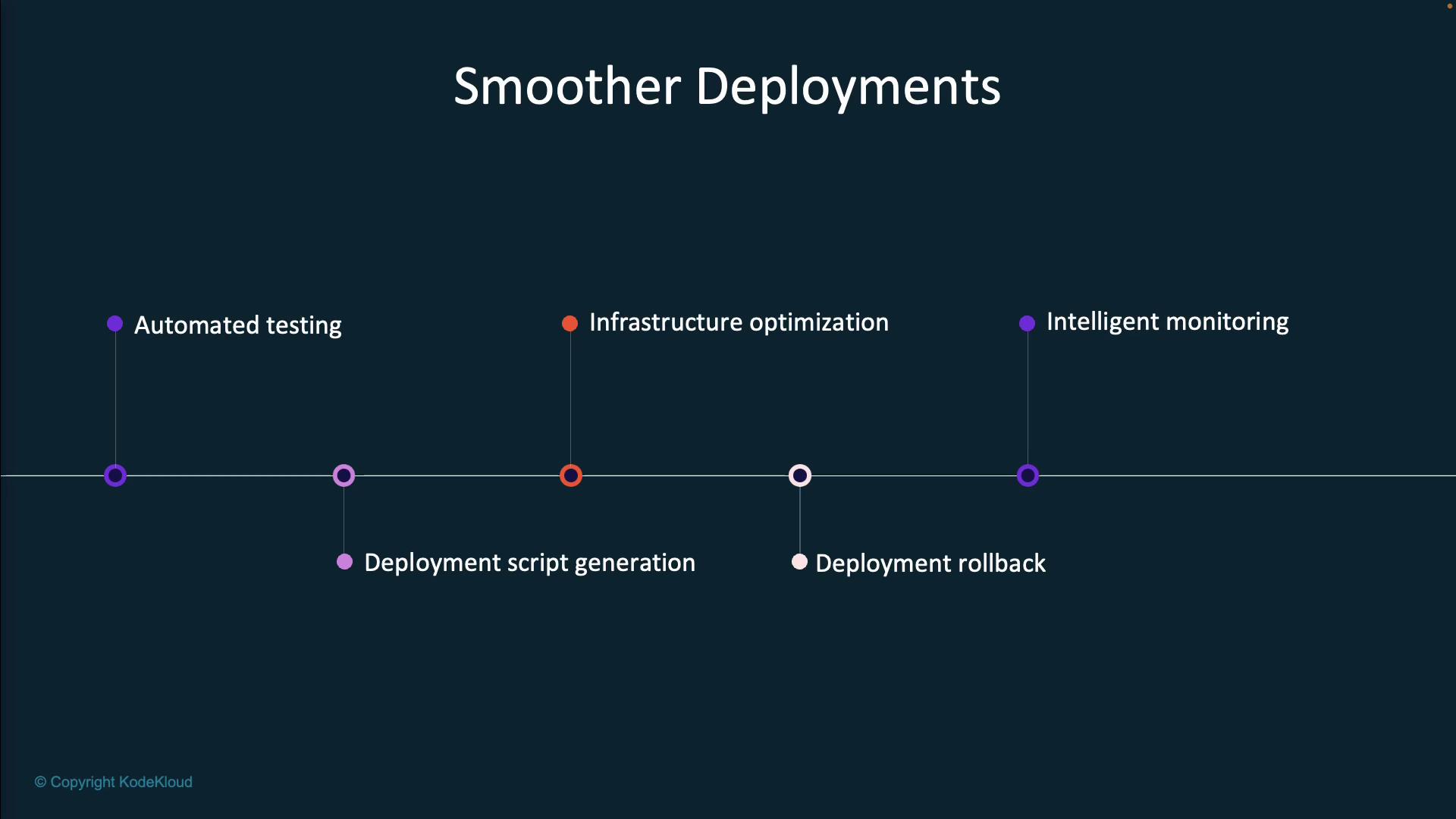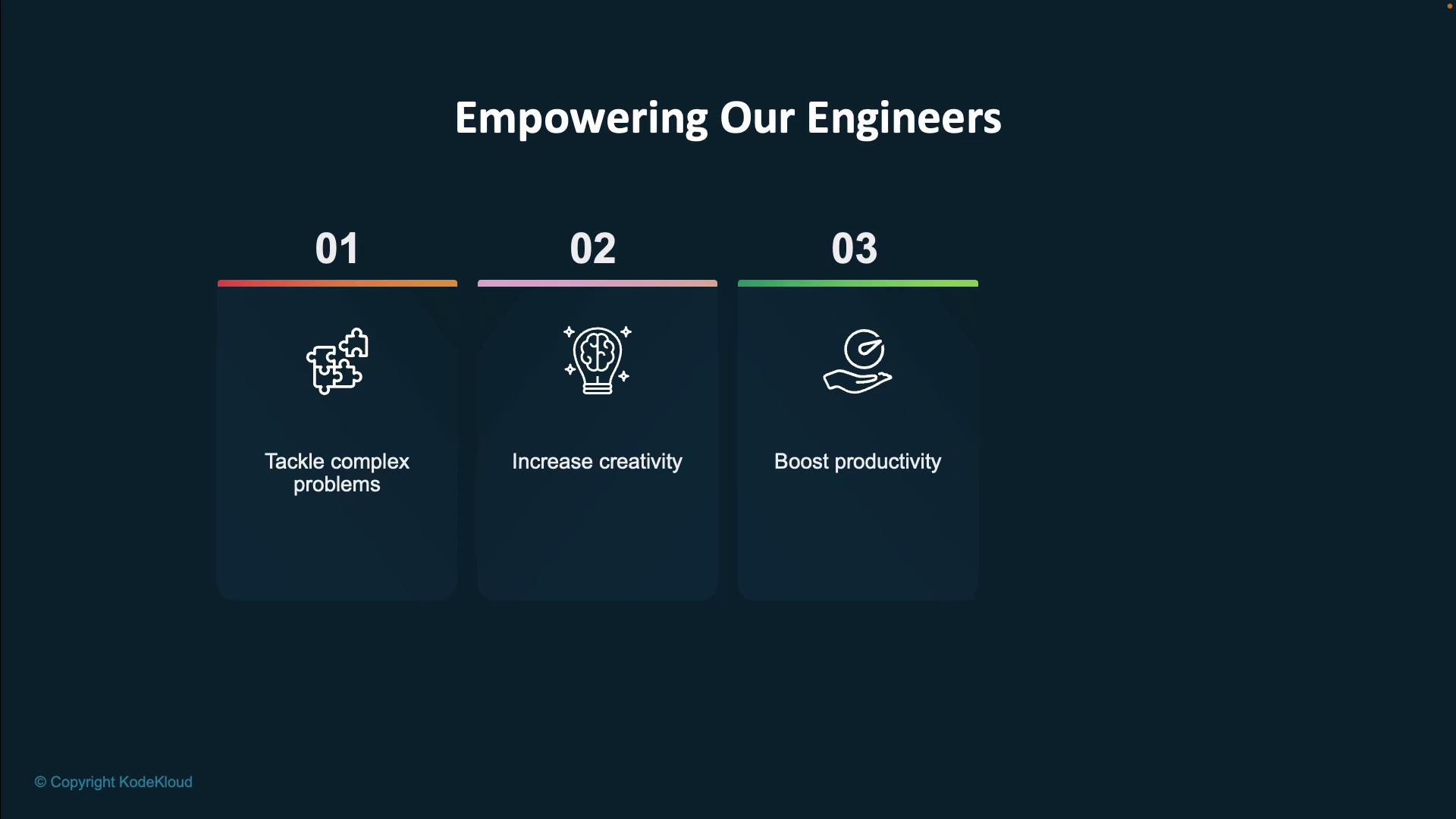AI-Assisted Development
Introduction to AI Assisted Development
Benefits of AI
In this article, we explore the advantages of AI-powered development tools and explain why over a million developers and DevOps practitioners have already embraced them. While there are inherent risks, the benefits—ranging from improved code quality to smoother deployments—empower engineering teams and drive effective innovation.
Improved Code Quality
Generative AI tools streamline the development process by automating repetitive tasks, such as producing boilerplate code and enforcing consistent coding standards. This automation minimizes manual effort and allows developers to focus on complex problem-solving. Key benefits include:
- Automated generation of routine code, reducing human error.
- Contextual code recommendations based on best practices.
- Early identification of bugs and potential issues.
- Suggestions for refactoring to enhance structure, readability, and modularity.
Overall, these tools improve maintainability and efficiency by automating routine tasks and providing intelligent suggestions.

Faster Feature Development
AI-powered tools accelerate feature development by automating repetitive tasks such as code formatting, refactoring, and boilerplate code generation. With these tools, developers can:
- Generate functional code snippets from natural language descriptions or examples.
- Rapidly integrate new features and functionalities into applications.
- Analyze project requirements and user feedback to provide actionable insights and improvement suggestions.
This streamlined process significantly reduces development time and fosters creative problem-solving.

Smoother Deployments
AI-assisted testing and deployment processes make releases more reliable and efficient. Key improvements include:
- Automatic generation and execution of comprehensive test suites.
- Creation of deployment scripts that minimize manual, error-prone interventions.
- Analysis of infrastructure to recommend optimized configurations for performance and reliability.
- AI-powered pipelines that detect issues and roll back problematic deployments to minimize downtime.
- Continuous monitoring with actionable insights to enhance deployment processes.

Reduced Bugs
Generative AI models not only maintain high code quality but also proactively reduce the number of bugs and vulnerabilities. Their capabilities include:
- Real-time scanning and highlighting of potential issues.
- Suggesting effective fixes and code adjustments.
- Learning continuously from codebases to minimize future errors.
This proactive approach leads to a more reliable application with fewer bugs.
![]()
Enhanced Productivity and Empowerment
By automating routine tasks and offering valuable code recommendations, AI tools play a critical role in boosting productivity. Developers benefit by:
- Saving time on repetitive work to concentrate on strategic projects.
- Minimizing context switching through quick resolution of common coding challenges.
- Gaining confidence when dealing with complex problems through insightful suggestions.
- Continuously learning and improving their skills with AI guidance.
For DevOps teams, these tools streamline workflows and significantly enhance overall performance, creating a supportive environment where every team member can excel.

Strategic Implementation
Despite potential risks, a clear strategy is essential when adopting AI-powered tools. To successfully integrate these technologies, organizations should:
- Clearly define objectives and determine the extent of AI integration.
- Develop an implementation plan that aligns with broader organizational goals.
- Embrace the idea that these technologies are designed to augment, not replace, human expertise.
Note
Adopting AI-powered tools requires a shift in mindset. Focus on leveraging these tools to empower your teams and improve processes rather than viewing them as a complete replacement for human skills.
In conclusion, AI-powered development tools are revolutionizing how developers write code, deploy applications, and manage complex systems. By embracing these transformative tools, organizations can achieve improved code quality, faster feature development, smoother deployments, reduced bugs, enhanced productivity, and a greater sense of empowerment among developers. Let's continue exploring these innovations to stay ahead in the technology landscape.
Watch Video
Watch video content